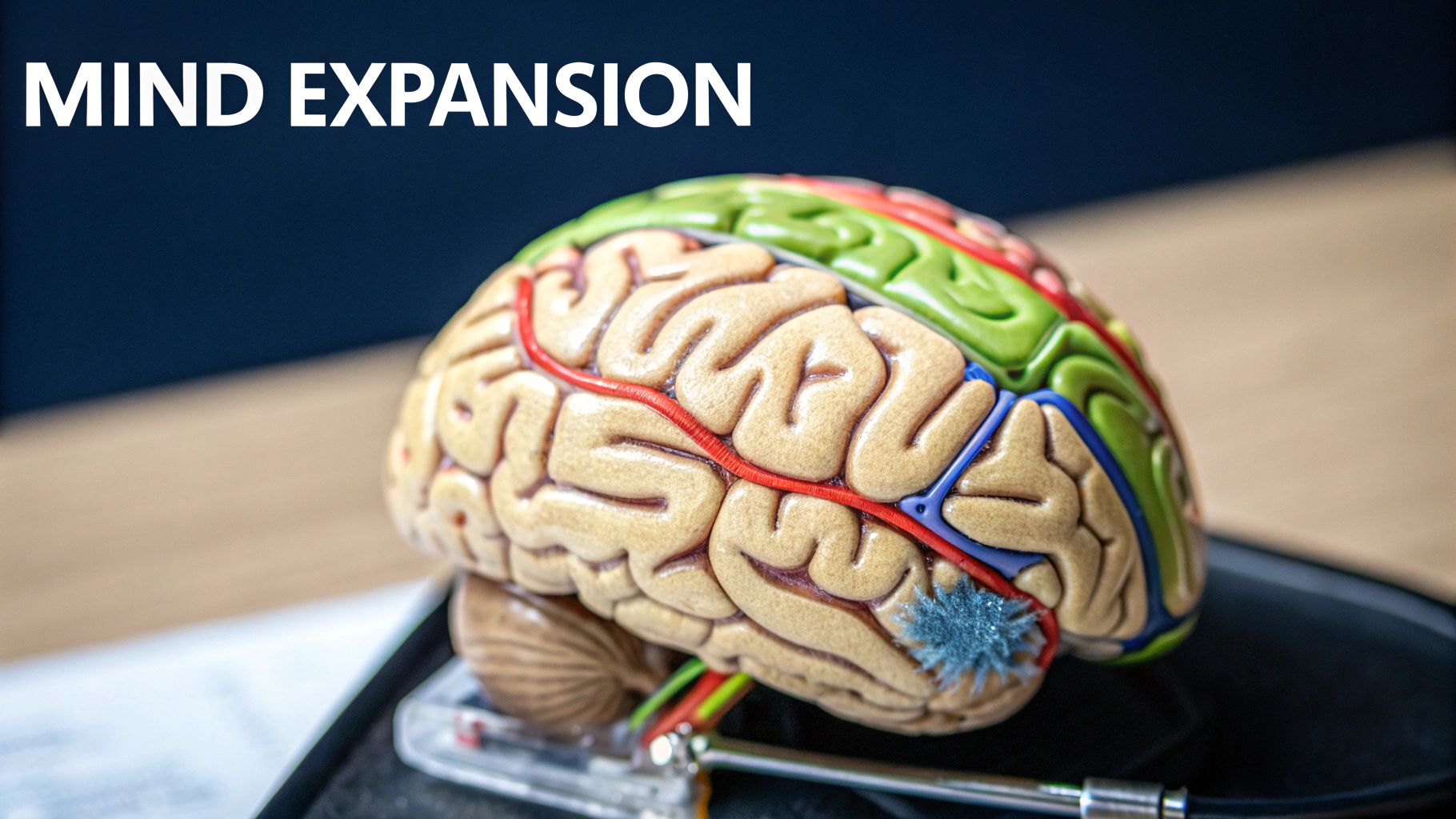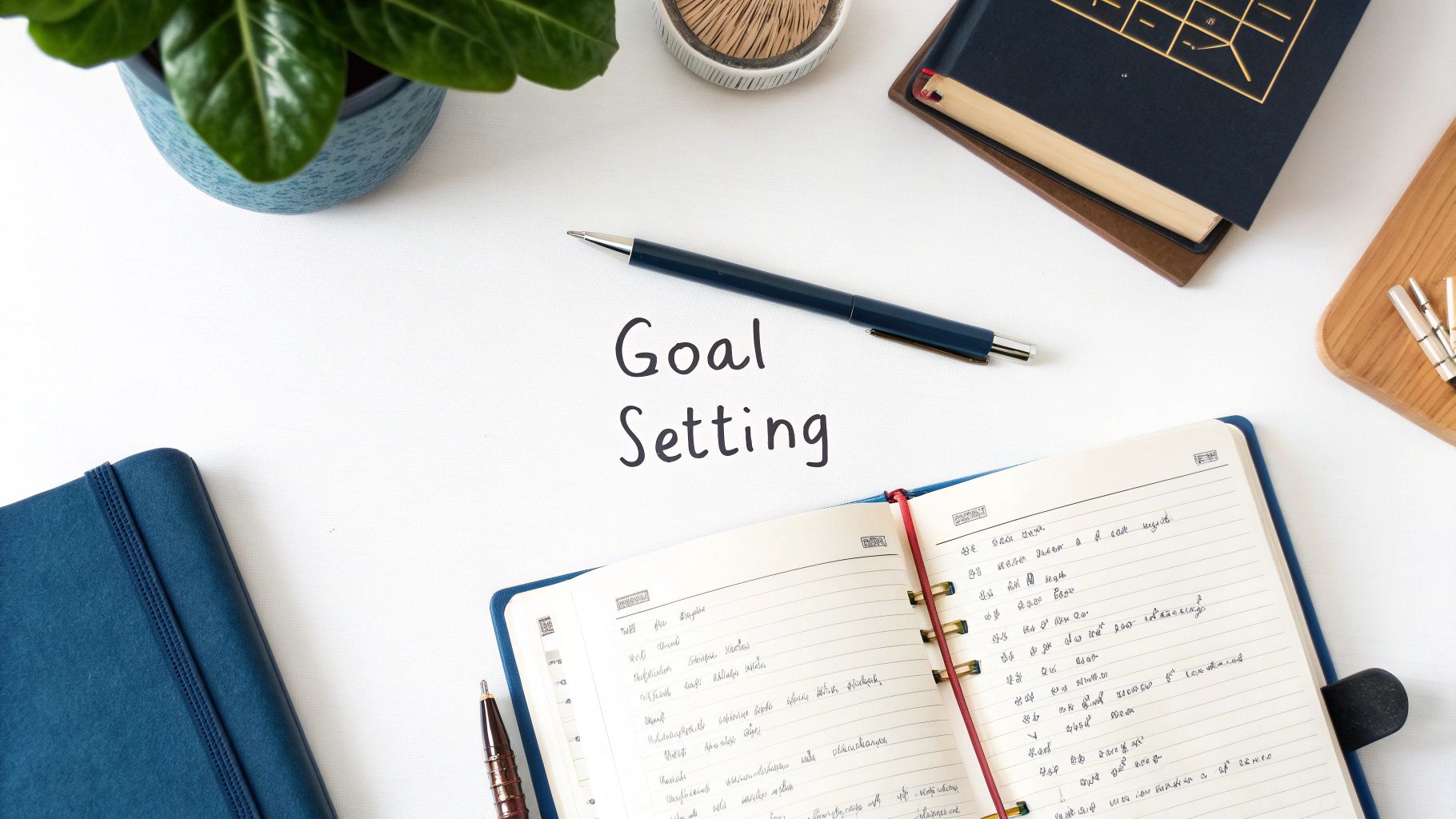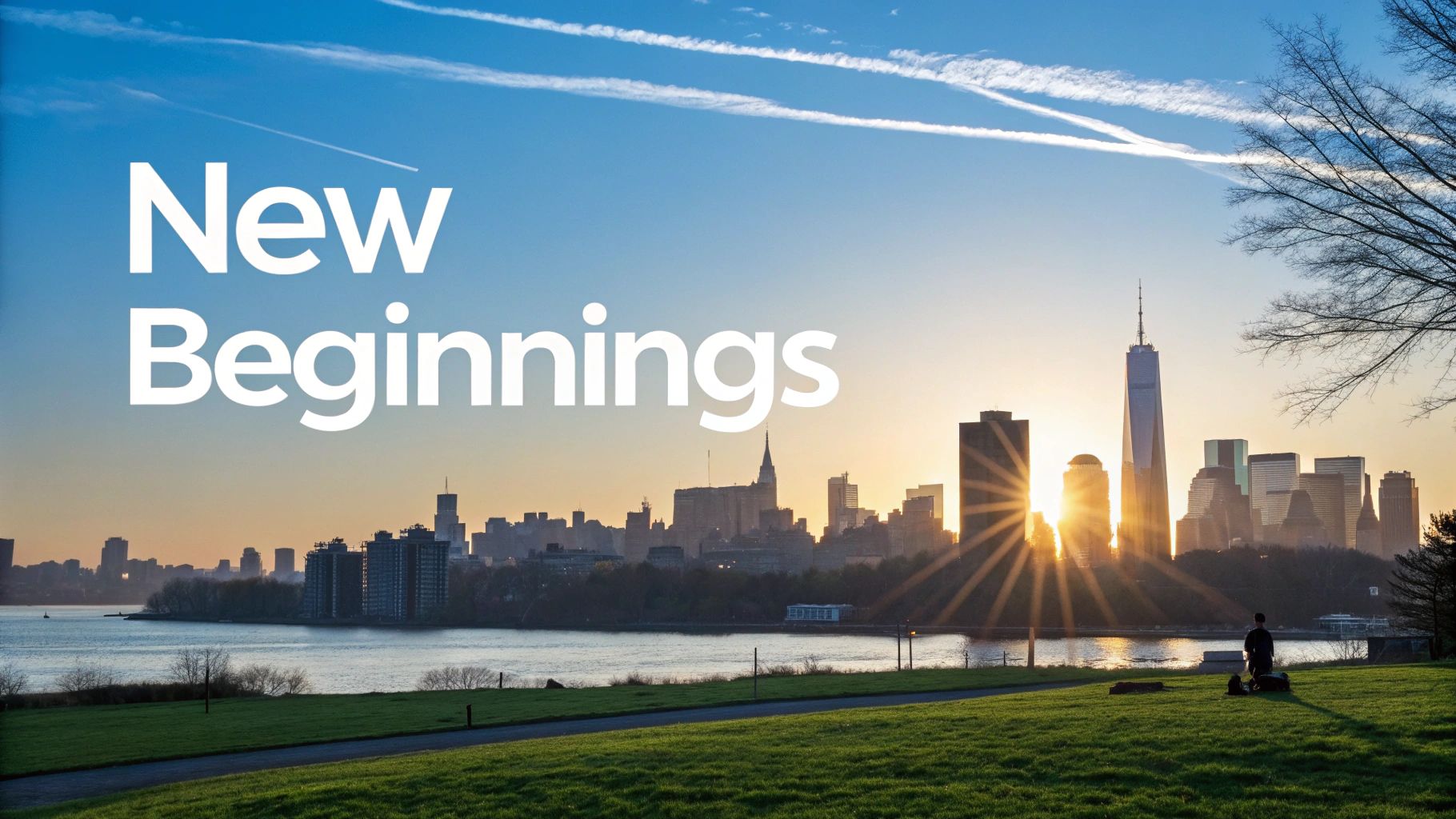Understanding the Hidden Impact of Limiting Beliefs

Our minds often hold us back through deeply ingrained thoughts and assumptions about ourselves and our abilities. These limiting beliefs operate quietly in the background, steering our choices without us even noticing. Think of someone who avoids speaking up in meetings despite having great ideas, all because they believe they "aren't good at public speaking."
How Limiting Beliefs Show Up Daily
These restrictive thought patterns appear in several key ways:
- Negative Self-Talk: The inner voice that whispers "you can't do this" or "you'll mess it up" when facing challenges
- Putting Things Off: Avoiding tasks not because you're busy, but because you doubt your ability to do them well
- Fear of Failure: Staying in your comfort zone even when amazing opportunities arise
- Self-Defeating Actions: Making choices that undermine your success because deep down you don't feel worthy
These patterns affect everything from personal relationships to career growth. A clear example comes from job applications - studies show that men typically apply for positions when they meet 60% of requirements, while women often wait until they match 100%. This gap stems directly from different beliefs about what makes someone qualified. For more insights on this topic, check out this research on career advancement and limiting beliefs.
The Real Price We Pay
When we let limiting beliefs control us, we pay a steep price:
- Missing Our True Potential: Never discovering what we could achieve if we pushed past our self-imposed limits
- Ongoing Frustration: Feeling stuck and unfulfilled because we're not pursuing what really matters
- Strained Connections: Our beliefs about ourselves affect how we interact with others, often creating distance
- Lost Chances: Saying no to experiences that could lead to personal and professional growth
The first step to breaking free is seeing how these beliefs actually hold you back. Once you understand what you're giving up by holding onto them, you can start building new, more helpful ways of thinking about yourself and your abilities.
Mapping Your Personal Belief Landscape
Understanding what holds you back starts with mapping out your thought patterns and beliefs. Think of it like exploring uncharted territory - you need the right tools to spot the beliefs that quietly shape your choices and decisions.
Identifying Your Limiting Beliefs
Start by looking inward with honesty. What areas of your life feel stuck? When you think about trying something new, what negative thoughts pop up? Maybe you catch yourself thinking "I'm not creative enough to start my own business" or "I'm too old to learn that new skill." These thoughts point to possible limiting beliefs.
Here are key ways to uncover limiting beliefs:
- Daily Journaling: Write down your thoughts regularly to spot recurring negative patterns
- Mindful Reflection: Practice observing your thoughts without judgment through simple meditation
- Outside Perspective: Ask trusted friends and mentors to help you see blind spots in your thinking
Understanding the Roots of Your Beliefs
After spotting these beliefs, trace where they came from. Many stem from childhood experiences, family messages, or social pressures. For example, a teacher's harsh comment about your art project years ago might still affect how you view your creativity today. These beliefs often show up as that inner critic voice. Read more about overcoming limiting beliefs in this case study of Sarah's journey.
Documenting and Tracking Your Beliefs
Create a simple "belief map" to track your progress. List out your limiting beliefs, where they came from, and how they affect your choices today.
| Limiting Belief | Origin | Impact |
|---|---|---|
| "I'm not good enough." | Childhood criticism from parents | Avoids taking on new challenges |
| "I'm not smart enough." | Struggling in school | Doesn't pursue higher education |
| "I don't deserve success." | Past failures | Sabotages opportunities |
This clear view helps you move from feeling vaguely stuck to understanding exactly what beliefs need work. With this awareness, you can build specific plans to shift these beliefs and create more supportive thought patterns.
Mastering the Art of Belief Transformation

You've done the work to identify limiting beliefs and understand where they came from. Now comes the next step - actively changing them. Like learning any new skill, this takes regular practice and the right approach.
Questioning Your Beliefs
Start by examining your beliefs with curiosity rather than accepting them as truth. When a thought like "I'm not good enough" comes up, ask yourself: "What actual evidence supports this?" and "What experiences contradict it?" Creating this mental distance helps you look at the belief more objectively, which is essential for reducing its impact.
Challenging the Evidence
Look closely at what seems to support your limiting beliefs. Often this "proof" comes from past difficulties or negative self-talk rather than facts. Remember that past challenges don't determine future outcomes. For example, if you're holding onto a past setback, reframe it as a chance to learn and grow rather than a sign of your worth.
Building Empowering Beliefs
As you work to release limiting beliefs, start creating new supportive ones. Focus on beliefs that are both positive and grounded in reality. Instead of "I'm not good enough," try "I am worthy and capable of achieving my goals." Make time to repeat these new beliefs daily and picture yourself living them out. For a deeper exploration of belief work, check out Byron Katie's Four Questions method.
Testing and Validating Your New Beliefs
Put your new beliefs into practice through real-world actions. Start with small steps outside your usual comfort zone. Set achievable goals and work toward them. Each small win reinforces your new beliefs and builds confidence. This creates an upward spiral - as you prove your new beliefs true through action, you naturally take on bigger challenges. Keep questioning, challenging, and rebuilding, and you'll open up new possibilities in your life.
Using Mental Imagery to Break Free

Breaking through limiting beliefs requires more than just logical thinking - you need to reshape your emotional responses. Mental imagery and visualization help you challenge those negative thought patterns that hold you back.
How Your Brain Processes Visualization
Research shows that when you visualize an experience, your brain activates many of the same regions as when you actually live that experience. This explains why visualization techniques work so well for top performers in sports, business, and other fields to build confidence and improve their abilities.
Building Strong Mental Pictures
Good visualization involves your whole mind, not just visual images. Think about what you would see, hear, smell, taste and feel in your ideal scenario. The more detailed and realistic you make it, the more impact it will have on breaking through your mental blocks.
Try these key steps for effective visualization:
- Get specific: Write down exactly what you want to achieve
- Use all your senses: Picture the sights, sounds, smells and physical feelings
- Connect emotionally: Feel the joy, pride and satisfaction of reaching your goal
- Practice daily: Make visualization a regular habit, like physical exercise
Adding Positive Self-Talk
Try pairing your visualization with encouraging statements. As you picture yourself succeeding, say affirmations that support your new beliefs. This helps override negative self-talk. For example, if you think "I can't do this," visualize completing the task while saying "I am capable and skilled."
Remember that changing beliefs takes time. Self-doubt may still pop up sometimes. But research shows that Functional Imagery Training (FIT) - which combines detailed mental pictures with motivation - can help rewire thought patterns. Learn more about using FIT to overcome limiting beliefs.
Getting Better at Visualization
Like any skill, visualization improves with practice. Set aside 5-10 minutes each day to create detailed mental scenarios. Over time, you'll find it easier to generate vivid images and feel their emotional impact. This practice especially helps before challenging situations like presentations or difficult conversations. By seeing yourself handle them successfully, you can reduce anxiety and boost your confidence.
Building Your Daily Transformation Practice
Breaking free from limiting beliefs requires steady, focused effort - much like building muscle through regular exercise. Creating positive daily habits is essential for making lasting changes in how you think and act. Let's explore practical ways to build these habits into your everyday life.
Designing Your Morning Routine
Starting your day intentionally sets a strong foundation. Here's how to begin:
- Quiet Time: Take 5-10 minutes for meditation or silent reflection
- Power Words: Choose uplifting statements that counter your doubts. Replace "I'm not ready" with "I face challenges with confidence." Learn more about the science behind positive affirmations
- Mental Rehearsal: Take a few minutes to imagine yourself handling the day's tasks with ease and skill
Mid-Day Resets
Life gets busy and stress builds up. These quick breaks help you stay centered:
- Movement Breaks: Stand up, stretch, or take a short walk while breathing deeply
- Appreciation Practice: List 3 good things happening right now
- Quick Check-in: Review your morning intentions and reset as needed
Evening Reflection
End your day thoughtfully to process experiences and prepare for tomorrow:
- Writing Practice: Note any self-doubts that came up and how you worked through them
- Gratitude List: Write down 3 specific things that went well today
- Next Day Preview: Set clear, achievable goals for tomorrow
Tracking Your Progress and Maintaining Consistency
Small steps add up to big changes when you stay committed. Try these methods:
- Simple Records: Keep a basic log of your daily practice using any format that works for you
- Support System: Connect with someone who shares similar goals
- Progress Notes: Recognize your improvements, even the tiny ones - they all count
By practicing these habits daily, you'll steadily replace old thought patterns with more helpful ones. It's not about perfection, but about showing up consistently and doing the work. Over time, you'll find yourself naturally thinking and acting with greater confidence.
Navigating Challenges and Sustaining Growth

Changing deep-rooted beliefs takes time and patience. Like any meaningful change, you'll face obstacles along the way. Let's explore practical ways to handle these challenges while keeping your momentum going.
Building Resilience to Setbacks
We all face setbacks when working on personal growth. These moments can trigger old thought patterns and self-doubt. But here's the thing - setbacks are normal and often teach us valuable lessons. The key is building mental toughness to bounce back. Here's how:
- Look for Learning: Instead of beating yourself up over mistakes, ask "What can this teach me?"
- Be Kind to Yourself: Talk to yourself like you would a good friend going through tough times
- Take Action: Put your energy into finding ways forward rather than dwelling on what went wrong
These simple shifts in thinking help you stay positive even when things get rough. This mindset becomes your foundation for lasting change.
Managing External Resistance
Sometimes the biggest pushback comes from those closest to us. Friends and family might question your new direction or unconsciously reinforce old patterns. While they usually mean well, you'll need strategies to stay on track:
- Be Clear About Your Goals: Explain what you're doing and why it matters to you
- Find Your People: Connect with others who support your growth journey
- Help Others Understand: Share your process and show them how their support makes a difference
Taking these steps creates an environment where you can grow without constant resistance. Having people in your corner makes the journey much easier.
Staying Committed During Difficult Times
Energy and drive naturally ebb and flow. Here's how to keep going when motivation dips:
- Remember Your Why: Connect with the real reasons you started this journey
- Notice Small Progress: Every step forward counts - celebrate the little wins
- Picture Success: Take time to imagine how life will be different once you break through old limitations
These simple practices keep you moving forward even on tough days. They remind you why this matters and help you see the bigger picture.
Creating Long-Term Sustainability
Real change sticks when it becomes part of who you are. Here's how to make that happen:
- Make It Routine: Work your new mindset into daily life
- Keep Growing: Stay curious and open to new ways of thinking
- Check In Regularly: Look at your beliefs from time to time to catch any old patterns creeping back
This steady approach helps you grow naturally while staying true to yourself. It builds confidence to handle whatever comes next.
Ready to move past what's holding you back? The Covered Call Podcast shares real stories of people who've broken free from limiting beliefs to create amazing lives. Listen in to learn practical ways to reach your full potential.

